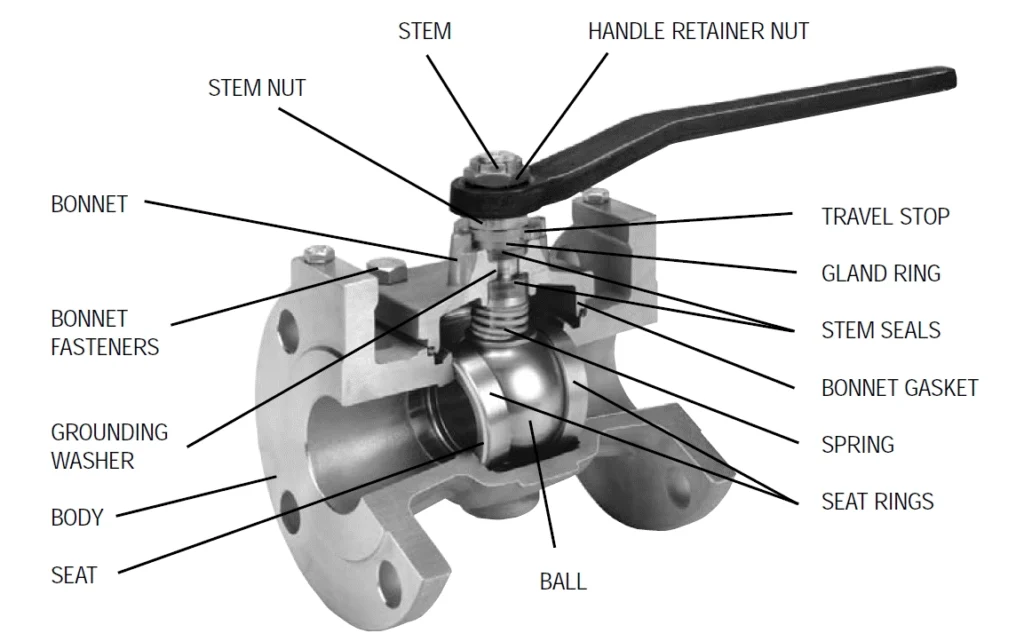BLOG
DELCO Valve Provide Various Optimal Solution For Industrial Valves, Especially For Control Valves.
TAGS
Contact Us
Understanding Ball Valves: Key Features and Comparisons
- Morning Jiang
In modern industrial and building systems, the role of valves is crucial. As key components in controlling fluid flow, ball valves are widely used due to their unique design and efficient performance. This article will detail the working principles, structural features, and comparisons with other types of valves, helping readers better understand their importance in fluid control.
What is a Ball Valve?
A ball valve is a type of valve that uses a spherical disc (the ball) to control fluid flow. It features a ball with a circular passage that can be rotated to quickly open or close the valve. Ball valves offer excellent sealing performance and flow control capabilities, making them suitable for applications requiring rapid response and high precision. Depending on the application requirements, ball valves can be equipped with electric, pneumatic, or hydraulic actuators to meet various operational needs.
Working Principles of Ball Valves
The closure element of a ball valve is a sphere that rotates around an axis perpendicular to the passage to open or close it. It requires only a 90-degree rotation and minimal torque to ensure a tight seal. During operation, the valve must be rotated 90 degrees to position the inlet and outlet in a spherical shape, ensuring unobstructed fluid flow.
Structural Features of OEM Ball Valves
- Manual top-entry floating ball valve with open/close indication
- Rotating valve locking device
- Center flange leak-proof valve control system
- Blow-out prevention structure for rising stem ball valves
- Anti-static high-quality ball valve device
- Fireproof structure
- Reliable automatic ball valve seat sealing structure
- High-pressure ball valve with automatic pressure relief structure
Comparison of Ball Valves and Butterfly Valves
Ball valves and butterfly valves are common fluid control valves. Key differences include:
- Design: Ball valves use a spherical disc, while butterfly valves use a disc that rotates around an axis.
- Size: Ball valves are typically larger, while butterfly valves are smaller.
- Flow Control: Ball valves provide more precise and uniform flow control.
- Pressure and Temperature: Ball valves can withstand higher pressures and temperatures.
- Cost: Butterfly valves are generally cheaper and require less maintenance.
The choice depends on application needs; for precise flow control, ball valves are preferable, while butterfly valves may be better for quick opening and cost considerations.
Comparison of Ball Valves and Gate Valves
Both ball valves and gate valves are commonly used for fluid control, with major differences including:
- Design: Ball valves have a spherical disc, while gate valves have a gate-like disc that moves up and down.
- Functionality: Ball valves are best for on/off control, whereas gate valves are more common for precise flow control.
- Flow Control: Gate valves provide more precise flow control but take longer to open and close.
- Pressure and Temperature: Gate valves can handle higher pressures and temperatures than ball valves.
- Maintenance: Ball valves are generally easier to maintain due to fewer moving parts.
The choice should be based on specific application needs; for precise control, gate valves may be preferable, while ball valves are suited for rapid opening and closing.
Summary
Ball valves have become an essential component in modern piping systems due to their efficient fluid control, excellent sealing capabilities, and low maintenance requirements. When selecting a valve, users should consider factors such as flow control precision, pressure tolerance, and cost to make an informed choice between ball valves and other types. By understanding the characteristics and advantages of ball valves, users can optimize the performance of their fluid control systems.


